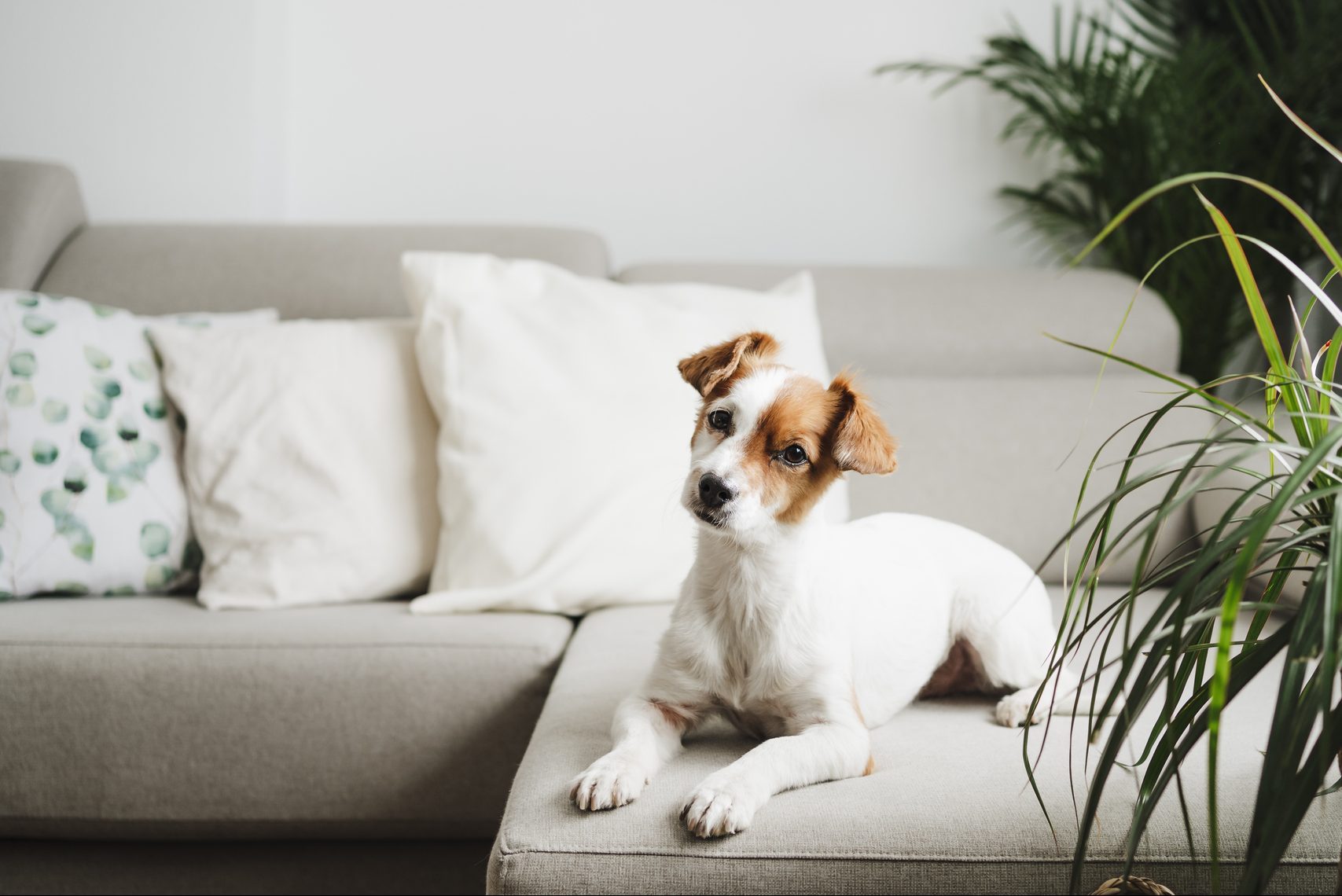No matter your dog's age, these tips from an applied animal behaviorist will have them choosing their dog bed over the couch every time.

How To Keep a Dog Off the Couch

You love your dog like they’re family, but that doesn’t mean they get a seat on the couch.
It’s cute when a puppy snuggles up on the sofa with you. But it might not be as cute if they’ve gotten big and still insist on bringing their most slobbery toy with them. Plus, getting up and down from elevated surfaces like couches can become a hazard for mobility-impaired or older pups.
Whatever the reasoning, allowing your dog on the couch or not comes down to personal preference. However, be consistent in teaching them the house rules, says Renee Rhoades, an applied animal behaviorist at R+Dogs.
Six Ways To Keep a Dog Off the Couch, According to a Dog Trainer
If your pooch consistently hogs your spot on the couch, here are some expert tips for training them to sit, stay and relax somewhere else.
Create cues
Clear house rules are best. But if it’s sometimes OK to be on the couch and sometimes not, how does your pup know which is which?
A simple solution: Use a word or gesture that your dog understands, like saying “up” when you want them to hop up and “off” when it’s time to vacate, Rhoades says. As soon as they respond to the cue, reward them. This way, your dog knows what you expect and won’t get mixed signals.
Give your pup their own spot
This could be a spot designated on the couch with a blanket, another comfy option or a dog bed all their own.
Your dog might prefer the couch because it’s softer, higher and cozier than their bed, Rhoades says. To find a better bed, pay attention to how your dog sleeps. Do they stretch out or curl up? Do they like to rest their head on something? Based on that, choose a bed that matches their style.
“If your dog likes to sprawl on their side, you might get a flat and spacious bed instead of a round and snug one,” Rhoades says.
Create positive associations
To encourage your dog to choose their new bed over the couch, reward them every time they use it. This reinforces the behavior and makes training a feel-good bonding experience.
There’s a short window to reward your dog, so use a positive marker like “Yes!” and give them a treat immediately after the behavior.
You can also do some settle training with them on the bed or the spot you want them to relax in, Rhoades says. This teaches your pup to relax and stay calm in one place, even when things are going on around them.
To do this, use a soft voice and stroke your dog gently if they are calm in their bed. Do this for longer and longer periods of time, gradually adding distractions while your dog settles.
Create physical boundaries
To make training easier for you and your pup, block the couch with a barrier, like a gate. This keeps your dog from accessing the couch and saves you from watching them all the time.
“Slowly start to take away the barrier, and remember to reward your dog for any alternative choices they make besides trying to get on the couch,” Rhoades says.
It also works, she says, to place things on the couch while teaching your dog where you want them to be. Just be consistent about leaving the items on the couch and helping your dog enjoy their other options. As long as you’re rewarding your dog for desired behaviors, you won’t need barriers and objects on the couch for long. Learn how often you should bathe your dog.
Don’t use deterrent sprays
“While there are deterrent sprays and devices on the market, I would not encourage anyone to use them,” Rhoades says. That’s because the spray must cause your dog some kind of discomfort to be effective. Who wants that?
“Dog deterrent sprays might seem like a quick fix,” she says, “but there’s no way to determine what other effects it might have on a dog’s behavior or your relationship with them.”
Don’t scold your dog
Dogs don’t understand punishment so scolding them is unnecessary, Rhoades says. Punishing dogs for unwanted behaviors can create a stressful and fearful living environment, leading to more destructive behaviors and a damaged relationship. Plus, dogs naturally want to lounge in comfy spots where their favorite humans are.
If your dog persists in trying to get on the couch, it could indicate their bed isn’t meeting their needs or preferences. They may also do it to avoid other animals or children. Be patient with your dog as they learn the rules. And if you need help with your dog’s behavior, Rhoades recommends talking to a professional dog trainer.




















